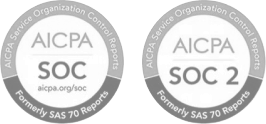ACH Debit
Article Navigation
An ACH debit is a type of transaction in which money is withdrawn from a bank account at the request of the payee. In this setup, the person or business receiving the payment initiates the transfer after obtaining authorization from the account holder. ACH debits are commonly used for bill payments, loan repayments, and subscription fees.
Automated Clearing House (ACH)
The Automated Clearing House is a secure, U.S.-based electronic network used for transferring funds between bank accounts. Governed by a national regulatory body, the ACH system supports a wide range of transactions, including payroll deposits, bill payments, and more. It processes payments in batches, offering cost-effective and reliable money movement across financial institutions.
ACH Debit Payment
An ACH debit payment refers to the execution of a withdrawal from an account via the ACH system. These payments are typically scheduled to occur automatically and regularly, allowing users to “set it and forget it.” Whether monthly rent, insurance, or utility bills, ACH debit payments help avoid missed due dates and late fees.
ACH Debit Transfer
This is the movement of funds from a customer’s bank account to a recipient, initiated through the ACH network. In contrast to manual payments, an ACH debit transfer automates the process once authorization has been given. It can be used for both recurring and one-time payments and often replaces traditional check writing.
Authorization
Before any ACH debit can occur, the account holder must provide consent. This is usually done by submitting a form, either online or in person, containing the account number, routing number, and agreement to the transaction terms. Once this approval is on file, future withdrawals can proceed automatically.
Recurring ACH Debit
Recurring debits are scheduled automatic withdrawals that happen on a regular cycle, such as weekly, monthly, or quarterly. These are ideal for recurring expenses, helping users stay consistent with financial obligations while minimizing the need for manual payment tracking.
Pull Transaction
ACH debit payments are classified as “pull” transactions because the money is pulled from the payer’s account by the recipient. This is the opposite of an “ACH credit,” where the sender initiates a push of funds to another account.
eCheck (Electronic Check)
An eCheck is a type of ACH debit that uses checking account information, typically taken from a paper check, to initiate an electronic transaction. eChecks allow faster and more efficient processing than traditional checks, and they are commonly used for both personal and business transactions.
ACH Debit vs. Debit Card
While both ACH debits and debit card payments draw money from checking accounts, they differ in method and speed. Debit card transactions are processed through card networks and are typically immediate. ACH debit payments, on the other hand, are handled by a centralized clearing house and are usually settled within one to three business days. ACH debits are preferred for scheduled, recurring payments due to their low cost and automation.
Originating Depository Financial Institution (ODFI)
This is the bank that represents the party initiating the ACH debit transaction. The ODFI sends the transaction request into the ACH network and communicates with the receiving bank.
Receiving Depository Financial Institution (RDFI)
This is the bank that holds the funds of the person or entity being debited. The RDFI processes the debit once it arrives through the ACH network, withdrawing the agreed-upon amount from the payer’s account.
Settlement Time
ACH debit payments are not instantaneous. They are processed in daily batches and can take up to three business days to settle. This delay allows for verification and provides a window for stopping unauthorized or erroneous transactions.
Overdraft Considerations
Because ACH debits are automated, there’s a risk of overdrawing the account if insufficient funds are available at the time of withdrawal. To prevent this, account holders should regularly monitor balances or set up low-balance alerts where available.
Disputing an ACH Debit Payment
If an ACH debit is unauthorized or incorrect, consumers have the right to dispute the transaction. Federal regulations allow a window usually 60 days to notify the bank and request a reversal or correction. Prompt action helps ensure funds are recovered in case of fraud or error.
Use Cases for ACH Debit Transfers
ACH debit transfers are widely used in various everyday and business scenarios:
- Automatic utility and rent payments
- Loan or credit card payments
- Monthly subscriptions or memberships
- Insurance premium withdrawals
- Donations to charities or non-profits
- Educational tuition or daycare fees
ACH Debit vs. ACH Credit
These two types of ACH transactions operate in opposite directions. An ACH debit is initiated by the recipient, who pulls funds from a payer’s account. An ACH credit is initiated by the sender, who pushes funds to someone else’s account. While debits are used for paying bills or subscriptions, credits are often used for payroll, tax refunds, or personal money transfers.
Security and Risk
ACH debit transfers are generally considered secure, especially compared to mailing checks or handling cash. However, they require account holders to share sensitive banking information and trust the recipient. Always verify the legitimacy of the payee before authorizing an ACH debit.
ACH Debit Clearing Process
ACH debits go through a specific clearing process. After authorization, the transaction is sent from the payee’s bank (ODFI) into the ACH network. It is then routed to the payer’s bank (RDFI), which verifies the account details and processes the withdrawal. This batch-based system helps reduce transaction costs but introduces a small delay in settlement time.
Manual vs. Automated Debits
Manual payments require the payer to initiate each transaction. ACH debits automate this process. Once the initial setup is completed, future payments happen on schedule without the need for manual involvement, making ACH debit ideal for recurring obligations.
Cancellation of ACH Debit
To stop future ACH debit payments, the account holder must notify the payee and may also choose to contact their bank. Some institutions allow users to block a specific merchant or all future debits, but cancellation terms may depend on the original authorization agreement.
Conclusion
ACH debit payments offer a modern, automated, and cost-effective solution for handling recurring financial obligations. By authorizing a payee to withdraw funds directly from your account, you reduce the need for checks, avoid late payments, and streamline your finances. With appropriate safeguards and regular account monitoring, ACH debit transfers provide both convenience and security for individuals and businesses alike.































 Back
Back